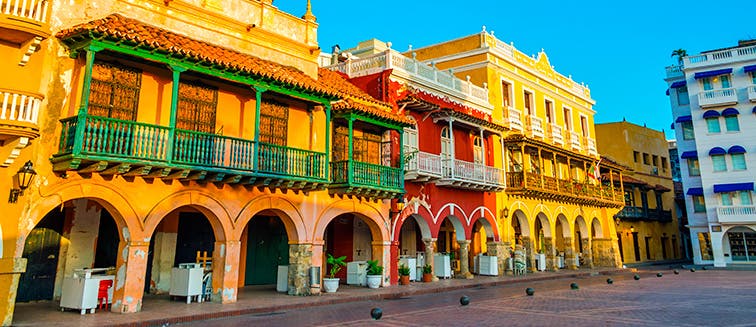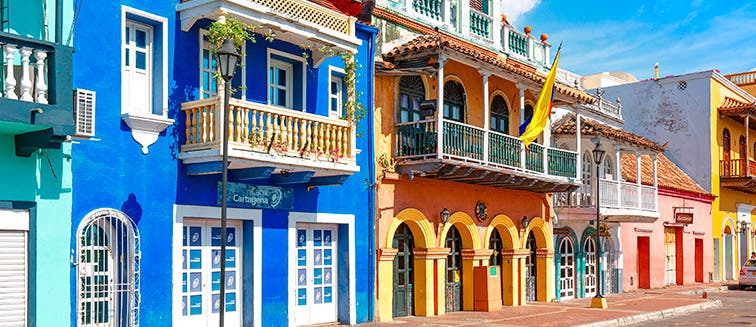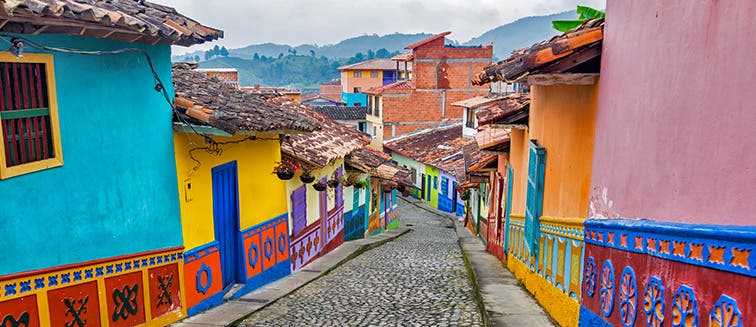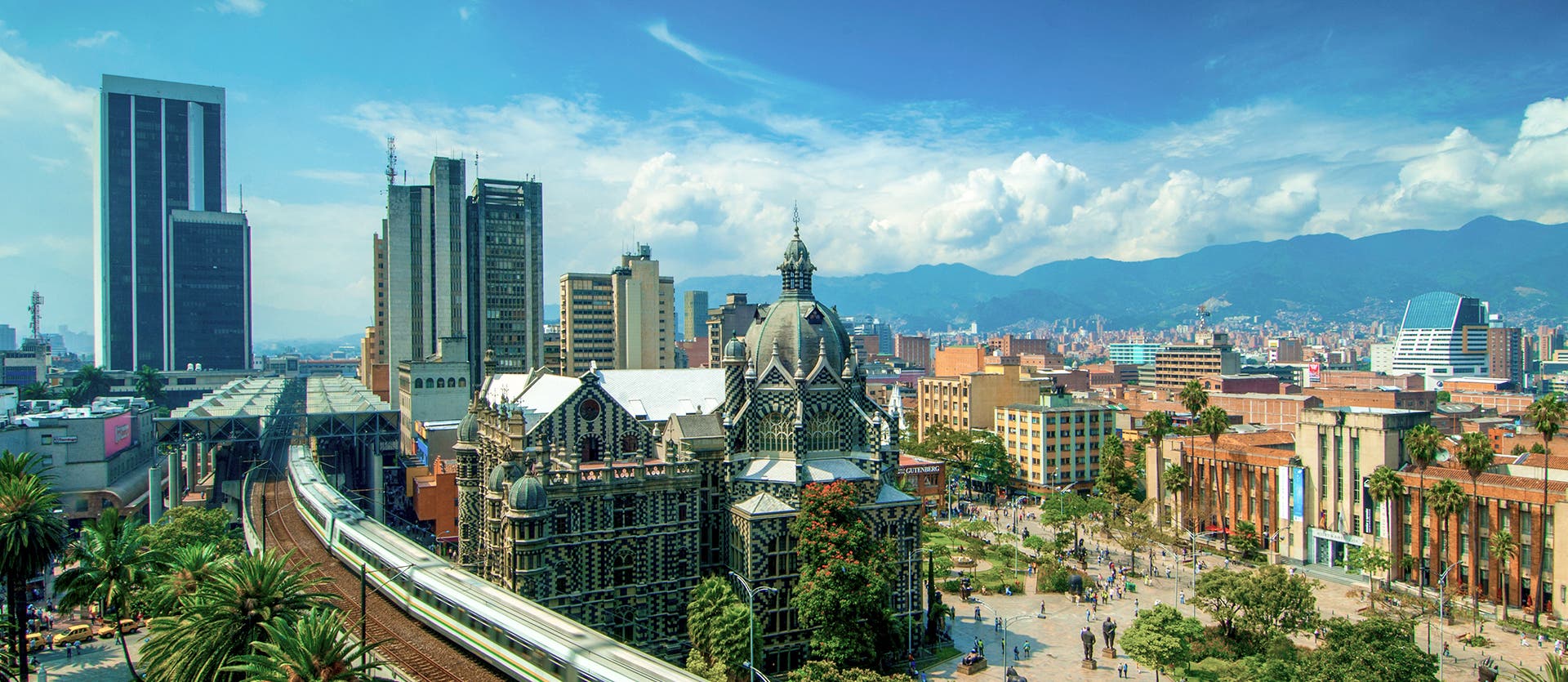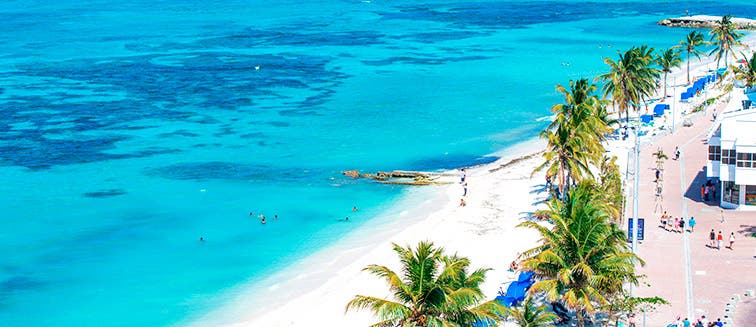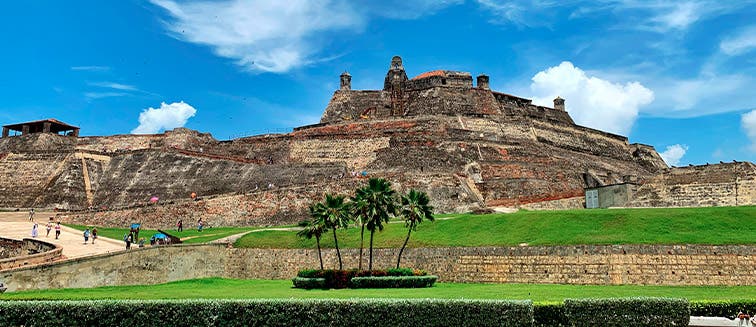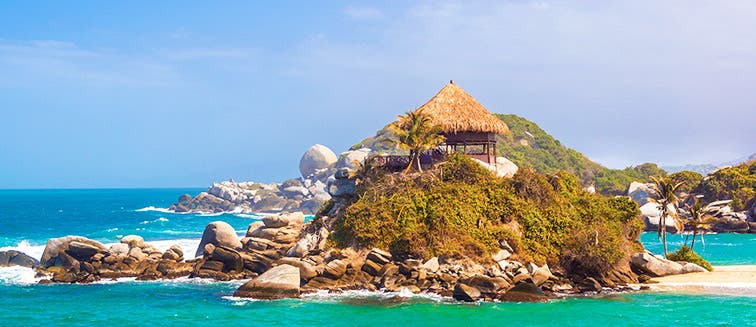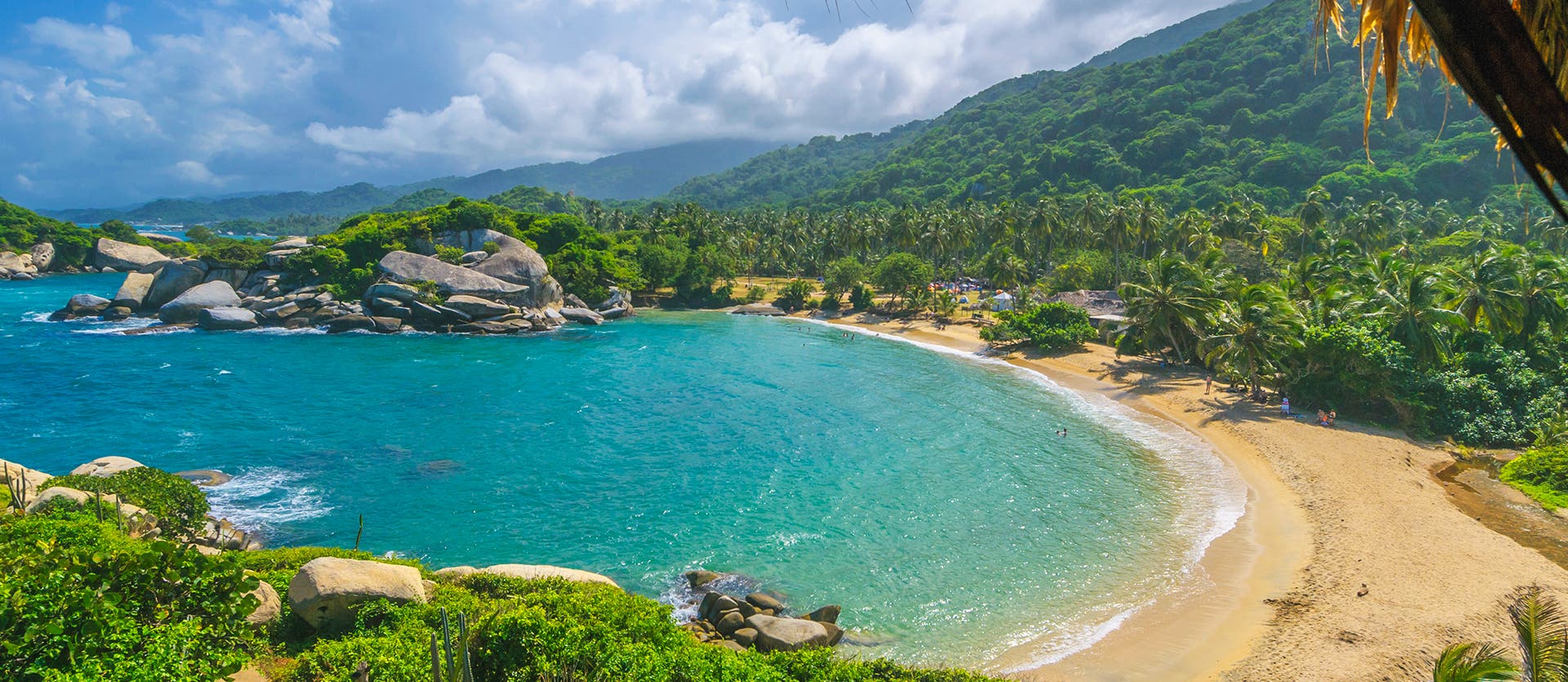A less-travelled treasure, Colombia is quickly emerging as one of South America’s most rewarding travel destinations. With idyllic Caribbean coastlines, cities bursting with characterful, colourful architecture and lush coffee-growing valleys, a trip to Colombia is a safe bet for a memorable adventure. Situated in the north of the continent, just below the isthmus of Central America, Colombia is famed for its diverse cities, such as Cartagena, Medellin and the capital, Bogota, which offer experiences as varied as twilight carriage rides, street art tours or the chance to trace the country’s sparkling heritage at the Museum of Gold.
Not to mention, Colombia does fiestas like no other and is well-known for its lively nightlife. Latin music lovers can experience the immense Barranquilla Carnival, which easily rivals Rio’s, or dig into the culture of Cali, the world capital of salsa. The great outdoors is something Colombia has in abundance. From coastal national parks such as Tayrona to tropical beaches complete with azure waters and coral reefs, not forgetting the soaring peaks of the awe-inspiring Andes, where you can get in touch with some of the most traditional sides of Colombian culture.
Colombia has thousands of parks and natural spaces where you can discover the country’s epic biodiversity. Its greatest reserve, the iconic Amazon, has always been one of the great frontiers for adventurers, who long to travel to Colombia.
History of Colombia
Colombia’s rich and complex history has contributed to its status as the fascinating travel destination that it is today. Originally inhabited by indigenous cultures such as the Quimbaya and the Tayrona, whose mysterious ruins can still be explored today on a tour of Colombia, Spanish conquistadors arrived in 1499, marking the beginning of extensive colonisation in the region. Spain’s ‘New Kingdom of Granada’ was established in Colombia, with Bogota as its capital. Cartagena and Santa Marta were also important Spanish settlements, as can still be seen in their charming colonial architecture.
In the 18th-century, prominent naturalists and scientists made the trip to Colombia to take part in the ‘Royal Botanical Expedition to New Granada’, which brought to light the rich biodiversity of the region and undertook the important task of classifying the country’s abundant species. The early 19th-century was characterised by a series of struggles for independence from Spain, culminating in the historic rebellion, led by Simón Bolívar in 1819, when the Spanish were defeated at the Battle of Boyaca. A new nation, comprising modern-day Colombia, Panama, Venezuela, Ecuador and parts of Brazil and Guyana, was formed, named the Republic of Colombia.
This huge union did not last for long, collapsing in 1830 and giving birth to a number of new South American nations. Civil war blighted the remainder of the century, although Colombia was famously the first nation in South America to adopt a constitutional government. Communist insurgent campaigns in the 1960s attempted to overthrow the government, but since the early 2000s peace talks have finally brought an end to the 50-year long civil war. A holiday to Colombia is now a safe option and since the country has secured its new-found peace, travellers have been visiting in ever-growing numbers.
Nature in Colombia
Dive, climb, trek or simply kick-back on the beach; Colombia’s natural environment is perfect for outdoor adventures of any kind. One of the world’s most ‘megadiverse’ countries, it is actually the most biodiverse when it comes to bird species. There are plenty of unique animals and plants to search for in Colombia’s rich natural havens and approximately 10% of the total species in the world can be found within the country’s territory, as well as a large number of rare endemic species. There’s a lot to be excited about on a holiday to Colombia if you’re a nature lover.
With environments ranging from the dense Amazon rainforest to the tropical shores of the Caribbean Coast, you cannot underestimate the diversity of Colombia. The lofty heights of the Sierra Nevada mountain range in Santa Marta are a good place to start when exploring the nation’s landscapes. Sat close to the Caribbean coastline, these mountains are home to a thriving bird population, with species ranging from toucans to condors and parakeets, as well as predators such as cougars and jaguars. A number of indigenous communities also inhabit the area. One of Colombia’s most famous natural havens is the Tayrona National Park, adored for its untouched beaches and accessible wildlife watching.
Here, you can spot several monkey species, elusive tree-dwelling jaguars and tiny dart frogs, to name only a few of its highlights. It’s the perfect place to combine laid-back beach relaxation with exciting wildlife trekking. One of the quintessential landscapes to experience if you travel to Colombia is the palm-fringed highlands of the Cocora Valley, situated between the Andes. It’s a picture-perfect sea of verdant trees, coffee plantations and cloud forests. The Cocora Valley is the kind of tropical haven you’ve always dreamt of, not to mention a caffeine-addicts paradise!
Culture in Colombia
Ethnically diverse and eternally vibrant, Colombian culture is a fusion of its many different ethnicities and their unique traditions. Indigenous groups, descendants of Spanish colonists, Afro-Colombians and European migrants have all left an influence on modern-day Colombian culture. Many traditional arts, dances and music can be traced back to the culture of Spain, whilst elements of the national cuisine, for example, are distinctively Caribbean in flavour, something you’ll notice in coastal cities such as Cartagena. Traditional Roman Catholic teachings lay the groundwork for family life, although the pull of urban life and the city have altered this somewhat. Culture in Colombia differs depending on the region, be it coastal, interior or in the mountains, each region has its own distinct traditions and values.
Colombia is an artistic nation; art is actively encouraged and celebrated. In some cities, such as Bogota, graffiti has been decriminalised, making for colourful streets and surprisingly liberal freedom of expression. The capital also leads the way by encouraging healthy living and a green environment with its ‘car-free Sundays’, when cyclists and pedestrians take over the city, a weekly event which has become somewhat of a family ritual for the inhabitants of the capital. This Spanish-speaking nation also boasts a particularly hearty and delicious cuisine, so come with a healthy appetite and bulk up on the abundant tropical fruits that are an everyday luxury of travelling to Colombia.
A beautiful country with more than enough natural attractions and hidden corners for every traveller to find their own slice of Colombian paradise. Vibrant, forward-looking cities, with an astounding variety of culture, make a tour of Colombia and eye-opening and heart-warming adventure for all travellers.






